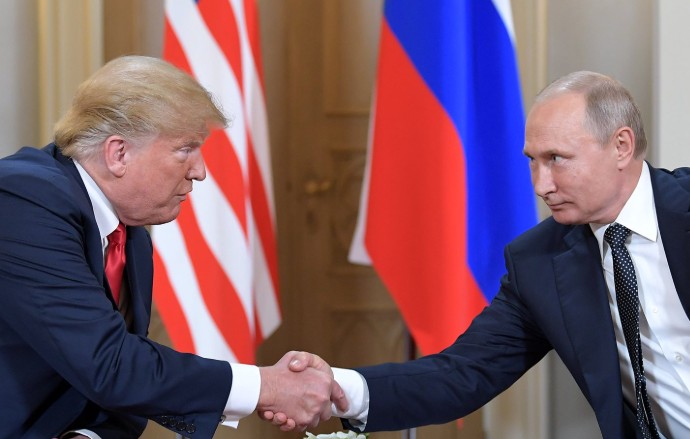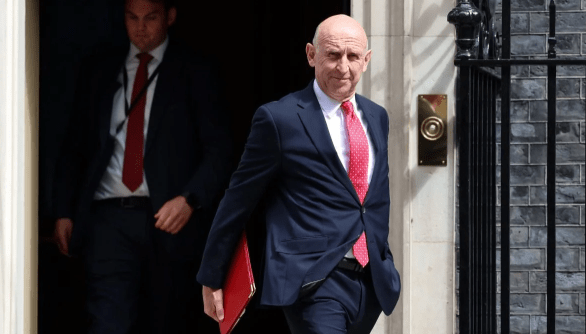In a candid revelation during a diplomatic visit across Europe, UK Defence Secretary John Healey suggested that US President Donald Trump may be the one person capable of persuading Vladimir Putin to enter peace negotiations over Ukraine.
While en route from Norway to Paris for talks with France’s new defence minister, Healey said: “President Trump is the figure that can bring Putin to the table, that can potentially deliver an end to the fighting.”
His remarks came shortly after a Joint Expeditionary Force summit in Bodø, Norway, where member nations signed a strengthened partnership agreement with Ukraine, emphasising continued support amidst Russia’s ongoing aggression.
Trump’s Global Influence – Wildcard or Peacemaker?
The comments have reignited debate over Trump’s role in global diplomacy, particularly his reputation for unconventional deal-making.
Healey’s statement follows Trump’s prior involvement in brokering a temporary ceasefire between Israel and Hamas, a move that, despite its fragility, was seen as a diplomatic win.
This history, according to Healey, sets Trump apart from other global figures in unlocking progress in stalled negotiations.
While comparing Ukraine with Gaza, Healey was cautious. Still, he noted that Trump remains the single, standout figure with enough sway to potentially end hostilities.
As tensions soar and diplomacy stalls, Trump’s past experience in international negotiations could position him uniquely to break the deadlock.

Coalition Quietly Builds for Post-War Ukraine
Behind the high-level politics, practical steps are being taken to prepare for eventual peace.
The coalition of Ukraine’s allies, often dubbed the “coalition of the willing”, is maintaining a steady pace of strategic planning. Their goal? Be ready when peace becomes possible.
“The work of the coalition… is being regularly refreshed so that we can genuinely feel we’re ready at the point of peace, whenever that comes, to step in and help secure that,” Healey said.
The coalition’s operations centre is now active in Paris and includes high-ranking British military officials working alongside European allies.
This effort is not just symbolic. It’s a foundational step in stabilising the region when, or if, a ceasefire is agreed.
The Coalition’s Paris Headquarters: Calm Before the Resolution
With diplomatic tensions surging, few are betting on an immediate breakthrough. But preparations on the ground suggest that Western allies are determined not to be caught off guard.
Military cooperation between Ukraine and its European partners has deepened. Strategic alignments, intelligence sharing, and security guarantees are all under discussion behind closed doors.
It’s this quiet but crucial groundwork that could make or break any future settlement.
Can Trump Deliver Again?
Trump’s recent meeting with Chinese President Xi Jinping added fuel to ongoing speculation. He revealed that the US and China are now working together to explore pathways to peace in Ukraine.
Still, Trump’s tone remained combative: “Sometimes, you have to let them fight,” he told reporters.
Yet the underlying message was clear: Trump believes he has a role to play in ending the war. Whether that approach will yield results in Eastern Europe, as it tentatively did in the Middle East, is a question dividing global observers.

Meanwhile, Putin has remained silent. His scheduled meeting with Trump in Hungary was abruptly cancelled. Soon after, the US sanctioned Russia’s two largest oil giants, further souring relations.
In response, both Moscow and Washington have exchanged veiled threats about resuming nuclear weapons testing. Diplomatic channels remain tense, and opportunities for meaningful dialogue are vanishing quickly.
As the war drags on, many hope for a breakthrough. Healey’s remarks may reflect growing sentiment among Western leaders that while peace is hard to envision, unconventional diplomacy might just offer a way through the fog.
And in that equation, Trump’s name keeps resurfacing.






